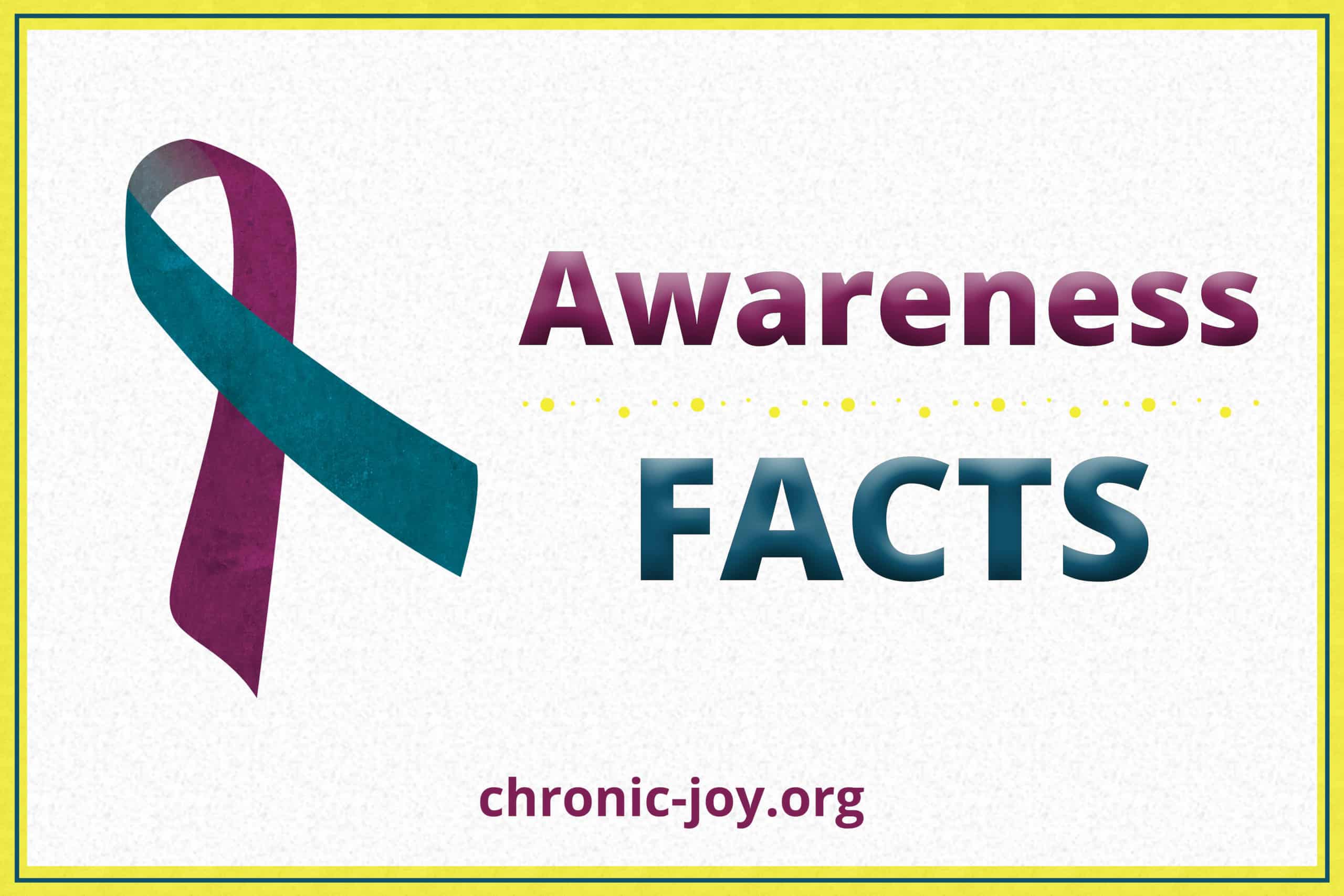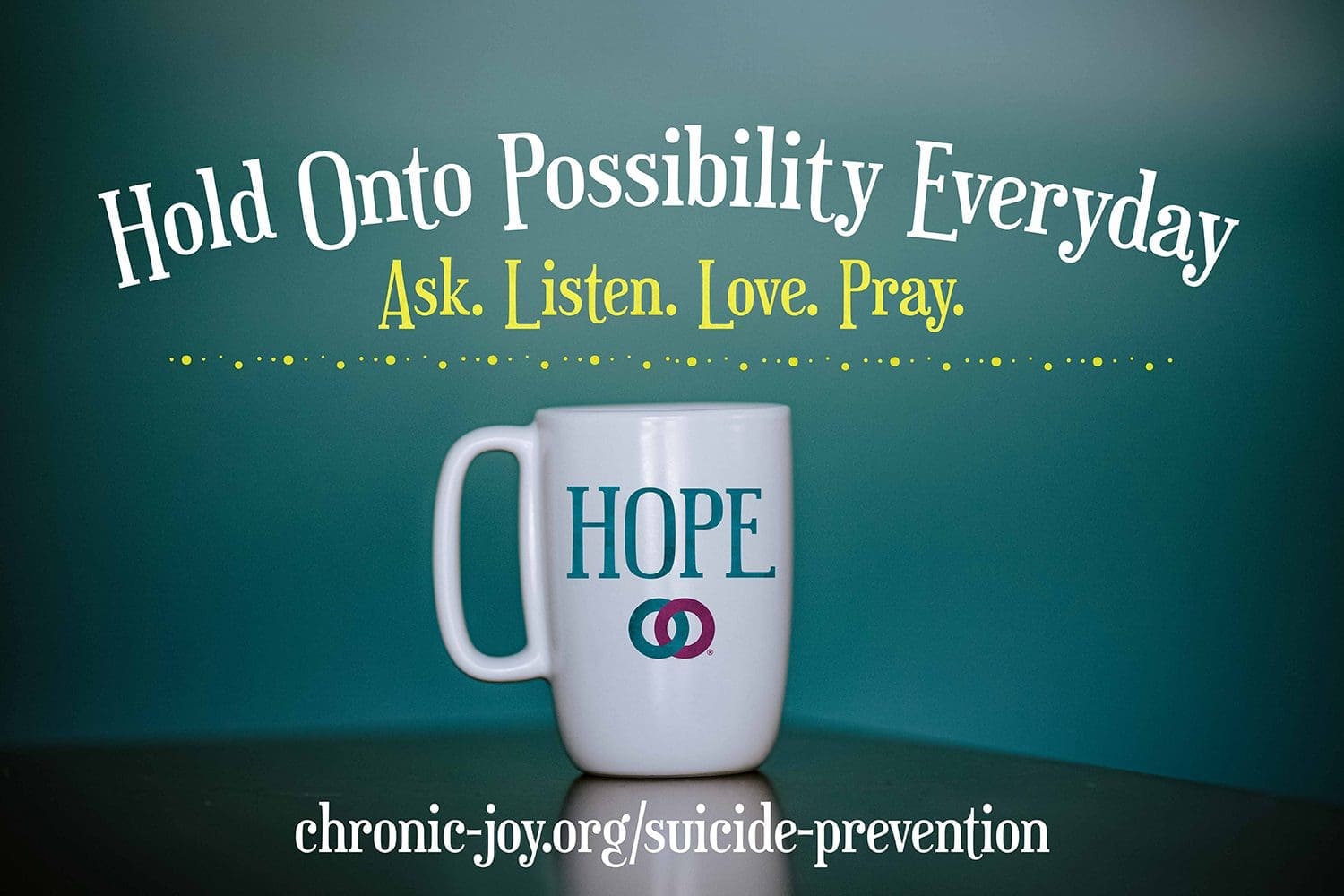
AWARENESS FACTS
Prevalence, Statistics, and Helpful Information
Chronic illness, mental illness, and caring for a loved one with illness impacts every aspect of life – faith, families, finances, friendships, education, hobbies, employment and marriage.
CHRONIC ILLNESS
- Globally, more than 60% of the population lives with one or more chronic illnesses.
- Invisible illness characterizes approximately 96% of those with chronic illness.
- 25% have illness that limits activity
- The healthcare needs of people with multiple chronic conditions are often complex.
- Chronic Illness affects 42% of the children in the world; this includes approximately 32 million American children aged 0-17 years.
- Approximately 33% of people with chronic illness experience symptoms of depression.
MENTAL ILLNESS
Statistics are for the U.S.
- Almost 47 million adults experience mental illness in a given year.
- Mental Illness impacts 1 in 5 adults. More than 11 million adults experienced serious mental illness (SMI) in 2017.
- Nearly 1 in 25 adults live with a serious mental illness.
- 60% of those living with serious mental illness do not receive treatment.
- Almost 50% of teens in the US have a mental disorder.
- Globally, mental illness impacts 16% of adolescents.
- 1 in 6 children in the US aged 2-8 years (17.4%) are diagnosed with a mental, behavioral, or developmental disorder.
- Approximately 33% of people with chronic illness experience symptoms of depression.
- Almost 33% of people experience an anxiety disorder in their lifetime.
- Globally, depression is one of the leading causes of illness and disability among adolescents.
- Suicide is the third leading cause of death of young people aged 15–19 years.
- 50% of all chronic mental illness begins by age 14 and 75% by age 24.
- Almost half of the adolescents with mental health issues do not receive any mental health services.
- 70% of youth in state and local juvenile justice systems have a mental illness.
CAREGIVING
Statistics are for the U.S.
- 4 in 10 people are caring for a loved one with significant health issues.
- More than 65 million people provide care for a chronically ill, disabled, or aged family member.
- 36% of family caregivers care for a parent or loved one over 50 years old.
- Family caregivers spend an average of 24.4 hours per week providing care. Nearly 1 in 4 of these caregivers spends 41 hours or more per week providing care.
- 1 in 7 caregivers provides care for special needs children.
- Many caregivers have been in their role for an average of 4.6 years
- 23% of family caregivers caring for loved ones for 5 years or more report their own health is fair or poor.
- 40% to 70% of family caregivers have clinically significant symptoms of depression with approximately 25% to 50% of these caregivers meeting the diagnostic criteria for major depression.
- More than 2 in 10 (21%) of family caregivers report that caregiving has caused their physical health to deteriorate.
CHILDREN & TEENS
Chronic Illness
- Chronic Illness affects 42% of children aged 0-17 years (approximately 32 million children) in the U.S.
- 29% have two or more chronic illnesses.
- About 25% of children in the U.S. aged 2 to 8 years have a chronic health condition.
- 29% have two or more chronic illnesses.
- An estimated 15-20% of children and teens have one or more chronic illnesses. Some require daily and lifelong medical treatment.
- Approximately 50% of people affected by rare diseases are children.
- 30% of children with a rare disease don’t see their fifth birthday.
Mental Illness
- Almost 50% of teens in the U.S. have a mental disorder.
- Globally, mental illness impacts 16% of adolescents aged 10-19 years.
- 1 in 6 U.S. children aged 2-8 years (17.4%) are diagnosed with a mental, behavioral, or developmental disorder.
- Globally, depression is one of the leading causes of illness and disability among adolescents.
- Suicide is the third leading cause of death of young people aged 15–19 years.
- 50% of all chronic mental illness begins by age 14 and 75% by age 24.
- Almost half of adolescents with mental health issues do not receive any mental health services.
ANXIETY
- Globally, an estimated 284 million people have experienced an anxiety disorder, making it the most prevalent mental illness.
- Worldwide, 1 in 13 people live with anxiety.
- Approximately 19.1% of U.S. adults had an anxiety disorder in the past year.
- Anxiety disorders are higher for females (23.4%) than for males (14.3%).
- Approximately 31.1% of U.S. adults experience an anxiety disorder during their lifetime.
- Approximately 22% are seriously impaired.
- An estimated 31.9% of adolescents have an anxiety disorder.
- Anxiety disorders among adolescents are higher for females (38.0%) than for males (26.1%).
DEPRESSION
- Depression is the leading cause of disability in the world.
- Globally, more than 264 million people of all ages suffer from depression.
- Approximately 17.3 million people 18 and older (7.1% of the adult U.S. population) have had at least one episode of depression in any given year.
- More adult females (8.7%) than males (5.3%) experience major depression.
- Prevalence of major depression is highest among young adults 18-25 years old (11.3%).
- Among adults diagnosed with major depression, close to 80% will continue to have episodes off and on for the remainder of their lives.
- Among U.S. adolescents aged 12-17, about 3.2 million (13.3%) have a major depressive episode in any given year.
SUICIDE
- Globally, one person ends his or her life every 40 seconds .
- Worldwide, almost 800,000 people die due to suicide each year.
- Suicide is the second leading cause of death for people aged 10 to 34 in the U.S.
- In 2018, 48,000 people ended their own lives in the U.S., making it the tenth leading cause of death.
- From 1999 to 2018, the suicide rate increased 35% in the U.S.
- Suicide is the second leading cause of death for persons aged 10-19 with rates recently increasing 33%.
- From 2007 to 2017 suicide rose 56% for young people aged 10-24.

SUICIDE PREVENTION
Hold Onto Possibility Everyday
Are you thinking about ending your life? Reach out for support. Are you concerned about a friend or loved one ending their life? Ask. Listen. Love. Pray.
The website contains outbound links to third-party websites. While these websites were checked at the time the information was compiled, their information and content may change. Third-party sites are linked in good faith.

